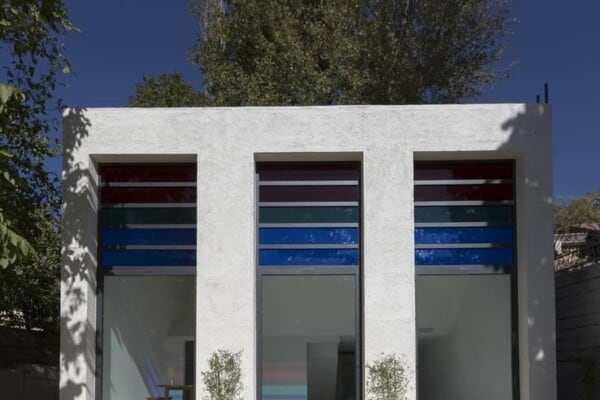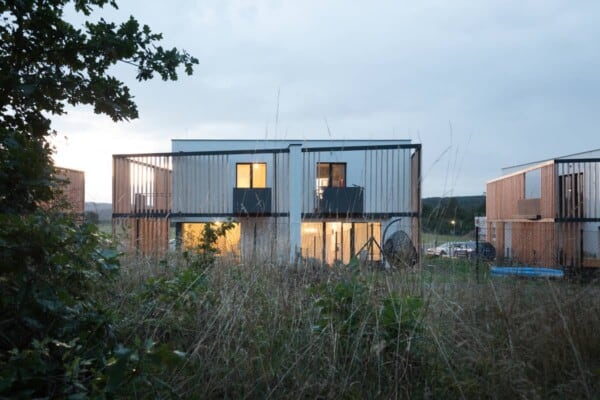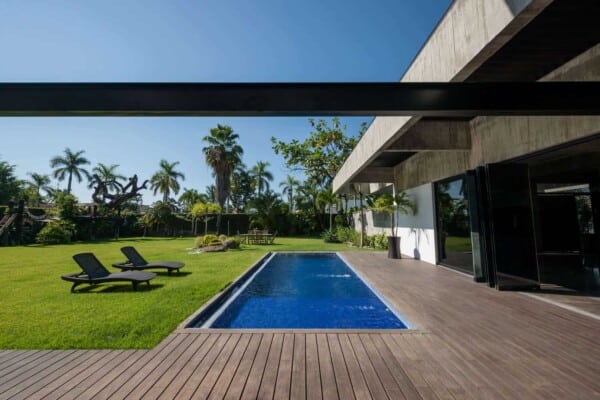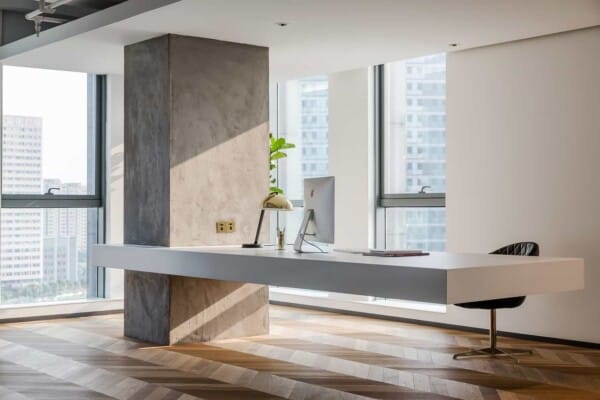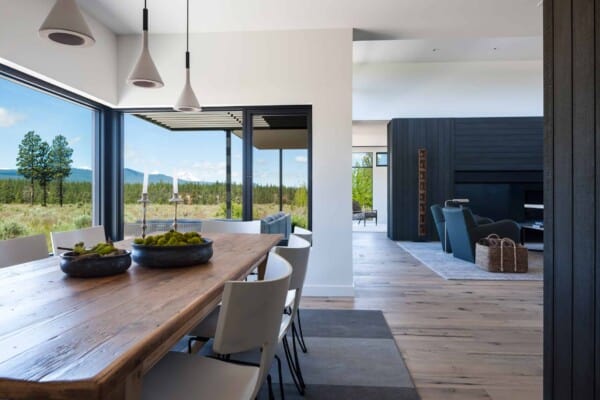MehrShahe Villa is a residential project designed by Hooba Design.
It is located in Alborz Province, Iran and was completed in 2016.
MehrShahe-Villa by Hooba Design:
“The Initial idea of this project was to design a 330 m2 (3,552 ft2) villa in a 3 hectares private yard facing a lake. One of the main criteria was to create spaces that are closely engaged with the surrounding landscape, an uninterrupted connection between the interior and the exterior to form a structure which becomes a part of the site itself:
A. A systematic organization of open and semi-open spaces was used to enhance the presence of nature in the interior spaces. The main semi-open space is a void on the first floor of the main cubical form. The strategic position of this void provides both physical connection to the private lounge and the master bedroom as well as visual connection to the lake. The semi-open space is also connected to the terrace on the lake side by the means of a bridge. This terrace is a perfect view point of the lake.
B. The stones used on the façade are in harmony with the existing stones in the garden. These stones are used in their natural form but in a controlled horizontal pattern. The voids in the stone pattern provide a controlled overlook and a limited sunlight penetration to spaces such as washrooms and corridors which require less exterior exposure. Integration of the voids and solids not only creates a consistent exterior façade, but also provides the interior spaces with a view to the greenery. At nights these voids provide a lighter feeling of the solid exterior façade. These voids are also used to naturally ventilate the building as well as to implement the mechanical equipment.
C. The existing trees between the open and semi open spaces were kept so that both spaces are surrounded by vegetation. The variation of sunlight penetration through the leafs during the day significantly enhances the quality of the atmosphere.
One of the main criteria in the design process was to maximize the amount of sunlight exposure. Two sets of skylights were implemented, one over the main staircase and the other at the vertical gap between the two roofs. Moreover, transparent dividers implemented parallel to the vertical skylight increase sunlight penetration to spaces not directly connected to the skylight. The main function of the horizontal skylight over the main staircase was to provide natural winter heating. This skylight could be shaded in summer to prevent excess sunlight exposure. In section, these systems enable sunlight penetration in three directions: vertical, horizontal, as well as diagonal.”
Photos by: Babak Toosipour, Deed Studi, Pooyeh Nouryan, Parham Taghioff


















































